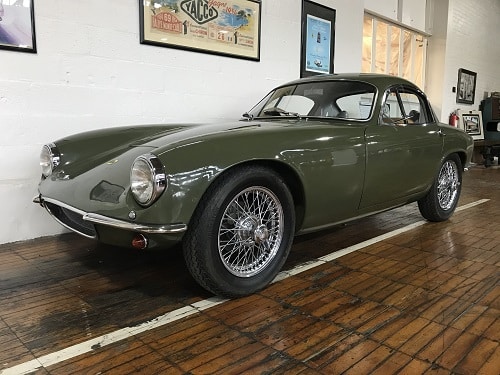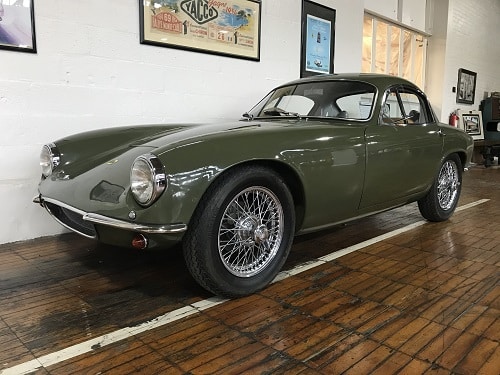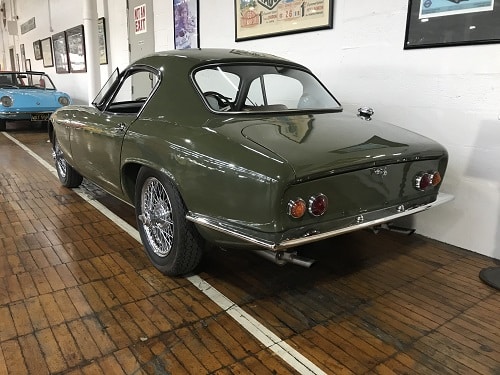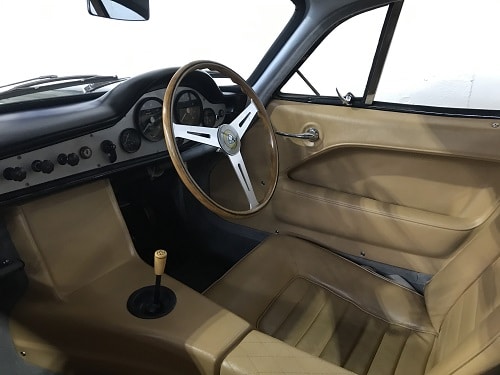
Lotus Elite Type 14 Series 2- 1962

The Elite, or Lotus Type 14, was the first purpose-designed road coupe from the innovative mind of Colin Chapman, founder of Lotus Cars (1952). This endeavor followed his open Six and Seven roadsters and a series of very successful sports racers, starting with his first fully enclosed aerodynamic 1954 Lotus Mk VIII.
Chapman’s approach was always to “add lightness,” instead of moving to bigger, heavier engines. He achieved this for the Elite by pioneering an all-fiberglass monocoque with only localized steel reinforcement. The 1953 Corvette showed the potential of a fiberglass body on a steel chassis, but Chapman took it a step further. The Elite was entirely fiberglass, including its load-bearing structure. Suspension parts and the front subframe supporting the engine, bolted directly to three box sections molded into the fiberglass body. His advanced glass-reinforced composite body panels were lightweight and cost-effective but, more importantly, it was the world’s first fiberglass monocoque production car.
The curvaceous body style was the work of Peter Kirwan-Taylor, John Frayling, and aerodynamicist, Frank Costin. The resulting design had a low drag coefficient of only 0.29. Underneath was an advanced suspension derived from Lotus 12 Formula 2 racing car and used “Chapman struts” at the rear. You can see their tops poking up through the rear window. The resulting build, and combined lighter weight, gave the Elite a nimble, exhilarating performance out of its 75hp 1.2-liter Coventry Climax “Feather Weight Elite” (FEW) inline four-cylinder engine. 1960 Motor magazine road test noted its maximum speed at 111.8 mph with 0–60 mph in 11.4 seconds. “Speed, controllability in all conditions and comfort in all its aspects make this compact two-seat coupe an extremely desirable property,” concluded the road test, calling it a “mettlesome thoroughbred.”
At roughly $5500 with tax, the Series 1 Elite was pricey, but it was gorgeous and fast! Series 2 developments included an improved design of rear suspension, and a better body build by Bristol Aircraft. In 1960, one could option a higher performance, special equipment (SE) Lotus model, like the one seen here. This included a ZF all-synchromesh close-ratio gearbox, two SU carburetors, and a modified exhaust manifold. Altogether, the package developed 85 bhp.
The Lotus Elite offered outstanding performance, but it was expensive to build and nearly bankrupted Lotus. In September 1963, after a mere five years, Elite production came to a halt. Road & Track magazine even ran “An Appreciation and an Obituary” for the elegant little car.
Specifications:
Manufacturer: Lotus Cars
Country of Origin: Great Britain
Drivetrain Configuration: Front-engine, rear-wheel drive
Engine: Coventry Climax, FEW, Water-cooled, 1216cc, in-line, 4-cylinder, 85hp
Transmission: ZF transmission, Manual 4-speed
Top speed: 115 mph
Years Produced: 1957–1963
Number Produced: About 1,030
Cost: About $6,000 (Series 2)


